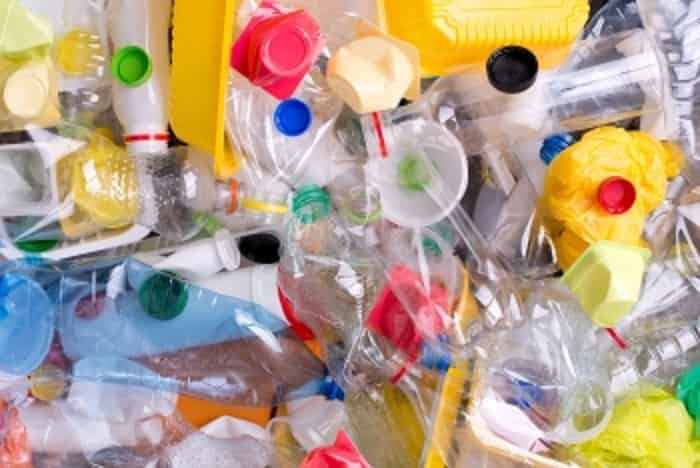Recycling waste to energy 08-02-2023 - Arhive
Recycling waste to energy
-Recycling must be favored over waste to energy
Edward Kosior says we must embrace the EU’s Packaging and Packaging Waste Directive’s goal for reaching climate neutrality in packaging.
The recent announcement of the European Commission’s new EU-wide rules on packaging has divided opinions. Starting with “leaked” reports ahead of the announcement last November, we had nongovernmental organizations (NGOs) on the one hand pressing for ambitious targets to drive our carbon footprint down and industry cautioning against unachievable goals that would depress rather than drive the sector forward.
It is indeed a fine balancing act, however, the one fundamental goal we need to keep in mind is that we must not, at any cost, exceed our carbon budget. To do so would push our already precarious climate system overboard. Recycling waste to energy
According to an assessment presented at COP27, our remaining carbon budget to stay under 1.5 C temperature increase is 380 billion metric tons, or less than a decade of emissions at the present rate. This means emissions must be drastically reduced.
With that in mind, we need to take the macro view and consistently opt for systemic changes across every facet of our lives that are achievable and, vitally, keep us within a safe carbon range.
The Packaging and Packaging Waste Directive’s (PPWD’s) proposed measures would bring greenhouse gas emissions from packaging down to 43 million metric tons compared with 66 million metric tons if we continue with business as usual. These measures are one of the many transformational steps we need to take as we continue developing innovative technologies to move humanity back from the brink. Recycling waste to energy
PET, or polyethylene terephthalate, which is plastics’ most resounding success story so far, is well within range of these new targets set at 30 percent recycled content by 2030 moving to 50 percent by 2050.
Food-contact plastic packaging’s targets, on the other hand, reflect the belief that these are one of the more challenging materials to recycle back into food-grade resins. Now that we have the technologies to achieve this, however, the 10 percent target set for 2030, shifting to 40 percent by 2040, should be achievable and would mean we will be closing the loop on some 400,000 tons of food-grade plastic per year.
And this is just one part of the overall equation. We urgently need to reshape the way we view what we call waste as we are quite literally wasting it when it can and should be turned back into the precious resource it has the potential to be, and we need to do this with the least amount of carbon emissions. Recycling waste to energy
Which brings us to waste to energy. According to a 2022 report by Plastics Europe, more than 29 million metric tons of postconsumer plastic waste were collected in the EU27+3. Of this, more than one-third (35 percent) was sent to recycling facilities, whilst more than 23 percent was sent to landfill and more than 40 percent was sent to energy-recovery operations.
These figures show a leaning toward waste to energy (WTE), with its high carbon footprint. Yet, buried within those 12 million metric tons of plastics will be a high percentage of potentially valuable recyclable materials.
Viewing WTE as a substitute for fossil fuels takes us in the wrong direction. WTE discourages recycling, perpetuates single-use plastic production and impacts health and the environment. According to a report by the Centre for Environmental Law (CIEL), every metric ton of plastic burned releases 0.9 metric tons of carbon dioxide into the environment, dangerously affecting our carbon budget. Recycling waste to energy
The fact that landfilling is on the decline is certainly a step in the right direction, however, the 12 million metric tons of waste still going to WTE clearly indicates we are wasting precious resources.
WTE’s role should be viewed as the very last step after we have stripped out the vast amounts of precious resources that could be retrieved from commingled waste.
The pressure mounting on energy companies to reduce their reliance on fossil fuels is creating a growing need for raw materials, which brings us to an obvious conclusion, energy companies are going to have to unscramble the waste stream, and this means focusing on “dirty” MRFs.
The new PPWD states that, from a consumer perspective, reusable packaging options will be optimized whilst limiting overpackaging and providing clear labels to support correct recycling. Recycling waste to energy
It will still take some time, however, before this changes consumers’ tendency to place a significant amount of potentially valuable recyclable material into the rubbish.
Rather than allowing WTE to gain momentum, we should be stripping all fossil-derived materials out of the waste stream, relying only on WTE as a last resort once the waste stream has been thoroughly filtered.
Dirty MRFs can recover anything from 5 percent to 45 percent of the incoming material as recyclables. Now that we have the technology to more efficiently identify and sort plastics into different fractions, we have the potential to increase this percentage.
We all need to ensure that nothing produced slips out of its own loop. The British Plastics Federation estimated that if all plastic were recycled globally, this could result in mean annual savings of 30 million to 150 million metric tons of CO2, equivalent to shutting between eight and 40 coal-fired power plants globally. Recycling waste to energy
Certainly, we need to embrace the PPWD’s goal to put the packaging sector on track for climate neutrality by 2050. This is not a lofty vision—it is an urgent warning to keep the planet’s climate within livable limits and avoid life-changing scenarios.

